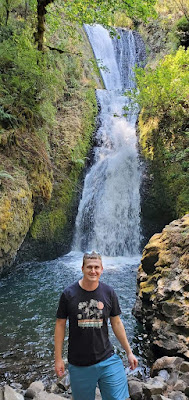Meet your Mets: Senior Meteorologist Dustin

Welcome Senior Meteorologist Dustin! Dustin has been working at NWS Reno since October, and it has been great to have him back. Here's a little bit more about his NWS journey. As a Florida native, Dustin has been fascinated by the weather from a very early age. His interest and inevitable career path were cemented by a few significant events during his childhood. In particular, 1998 stood out as a devastating year for Central Florida which saw both the deadliest tornado outbreak and worst wildfire season in Florida's history. Combined with the 2004 & 2005 hurricane seasons, Dustin was determined to work as a meteorologist with the National Weather Service. Shortly after receiving his B.S. in Meteorology from Florida State University with a Minor in Mathematics, Dustin began taking online courses to pursue a certificate in computer programming. During this time, he received a temporary Pathways Meteorologist position at the National Weather Service office in Reno, N...


